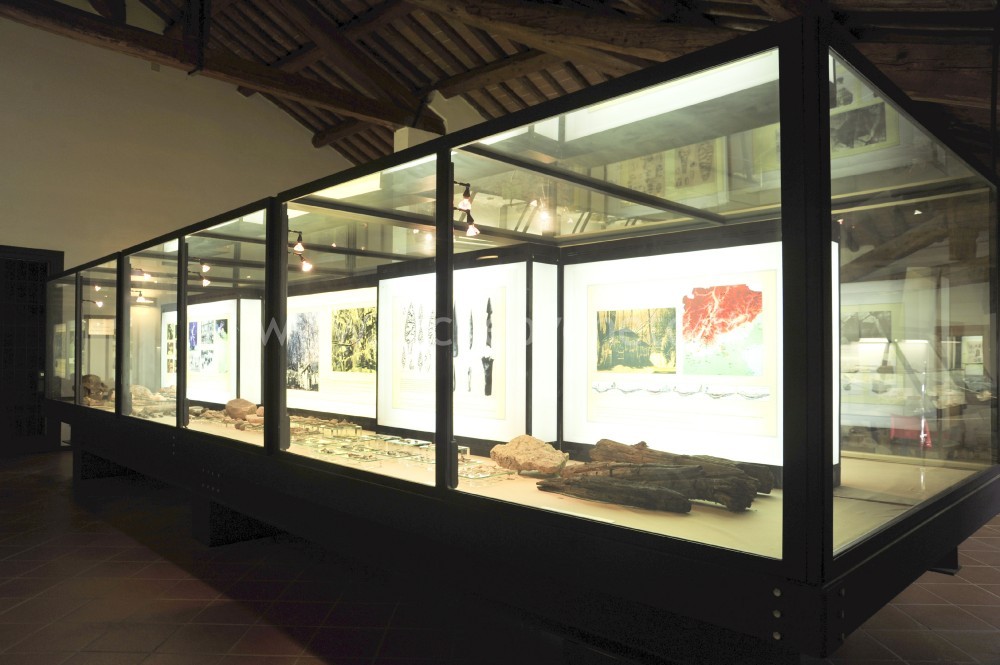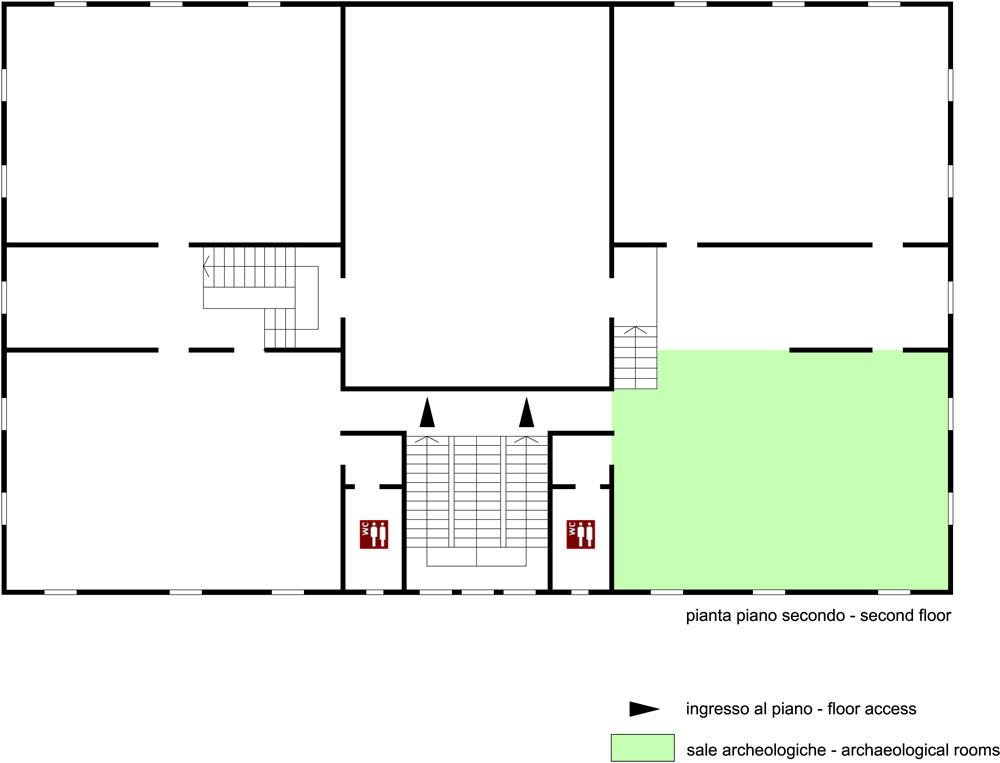|
|
File
Civic Ethnographic Museum – Stanghella
|
Piazza R. O. Pighin 21 – 35048 Stanghella (PD)
– Fax 0425 95670 |
  |
|
Summary

The museum provides detailed information on the human settlements in the area between the Euganean hills (north) and the Adige river (south) focusing on the topic of the relation between nature and human beings. The museum proposes a journey back in time, starting from the agricultural mechanization of the late eighteenth century and going back until the prehistoric age. The choice of the expositive criterion underlines the close relation between the ancient and modern age that characterizes the Bassa Padovana area, a region that has always displayed a strong cultural identity.
|

 From the library it is possible to reach the Room of the ancient colonization, which has to be accomplished yet. At the centre of the room, there is a large display case (11 metres long), which contains numerous prehistoric finds from the area near Stanghella. The purpose of the display case is showing the climatic and environmental changes that have influenced the settlement in the Bassa Padovana, better to understand the patterns of the ancient colonization of this area in relation to the material found in the eneolithic sites. The most representative site of the Copper age is Selva di Stanghella, where it has been possible to find a remarkable amount of flint artefacts, worked bones, arrowheads and querns. Thanks to the richness of the materials discovered, this site can be considered one of the largest and the most important settlement in Veneto in this period. Throughout the museum, the visit will be supported by panels addressing the following topics: the different chipping techniques used for hard stone and flint, the Holocene and Pleistocene fauna of the Euganean hills, the hypothetical reconstruction of a village of the Copper age, the map showing the distribution of the Neolithic and Eneolithic sites in Veneto. From the library it is possible to reach the Room of the ancient colonization, which has to be accomplished yet. At the centre of the room, there is a large display case (11 metres long), which contains numerous prehistoric finds from the area near Stanghella. The purpose of the display case is showing the climatic and environmental changes that have influenced the settlement in the Bassa Padovana, better to understand the patterns of the ancient colonization of this area in relation to the material found in the eneolithic sites. The most representative site of the Copper age is Selva di Stanghella, where it has been possible to find a remarkable amount of flint artefacts, worked bones, arrowheads and querns. Thanks to the richness of the materials discovered, this site can be considered one of the largest and the most important settlement in Veneto in this period. Throughout the museum, the visit will be supported by panels addressing the following topics: the different chipping techniques used for hard stone and flint, the Holocene and Pleistocene fauna of the Euganean hills, the hypothetical reconstruction of a village of the Copper age, the map showing the distribution of the Neolithic and Eneolithic sites in Veneto.
The visit goes on with the collection of the finds related to the first communities of the Bronze age from the settlements in Grotaro and Solesino: table pottery, spindle whorls, flint and bone javelin heads, dagger blades, scrapers and flint heads. The following panels present the thematic map of the Bassa Padovana with the main settlements of the Bronze Age and some aerial photographs of the area surrounding the sites.
Shortly a section will be set up in the last part of the room, which will be devoted to the pre-roman and roman period (in Veneto). It will display finds mainly coming from necropolises and burial grounds. At the moment it is possible to see a display case, which shows the burial of a horse from the site Boica di Solesino.
|

Admission: Negli orari di apertura
Solo su prenotazione
Su prenotazione
Ticket: No
 School access School access
 Disabled access Disabled access
Opening Days
| Tipology |
When |
Specs |
| Summer/Winter |
Monday |
Upon reservation |
| Summer/Winter |
Tuesday |
Upon reservation |
| Summer/Winter |
Wednesday |
Upon reservation |
| Summer/Winter |
Thursday |
Upon reservation |
| Summer/Winter |
Friday |
Upon reservation |
| Summer/Winter |
Saturday |
15.00 – 17.00 |
| Summer/Winter |
Sunday |
15.00 – 17.00 |
Recommended tour time (minutes): 15
 Toilet Toilet
 Parking Parking
 Bar/Resaturant Bar/Resaturant
There is a tavern, which contains pieces of furniture and objects from seventeenth century taverns of the area.
 Guide a stampa Guide a stampa
Brochure
Catalogo
Italian
 Information boards Information boards
Italian
 Captions under exhibits Captions under exhibits
Italian
 Guided Tours Guided Tours
 Educational activities Educational activities
 Library and documentation centre Library and documentation centre
 Other activities Other activities
| Catalogo – Guida del Museo Civico Etnografico di Stanghella 1994, in Quaderni del Gruppo Bassa Padovana, Stanghella. |
| Musei etnografici del Veneto 1998, Milano, pp. 57-59. |
| Musei d’Italia, Guida Touring Club Italiano 2003, Milano, pp. 238-239. |
|

